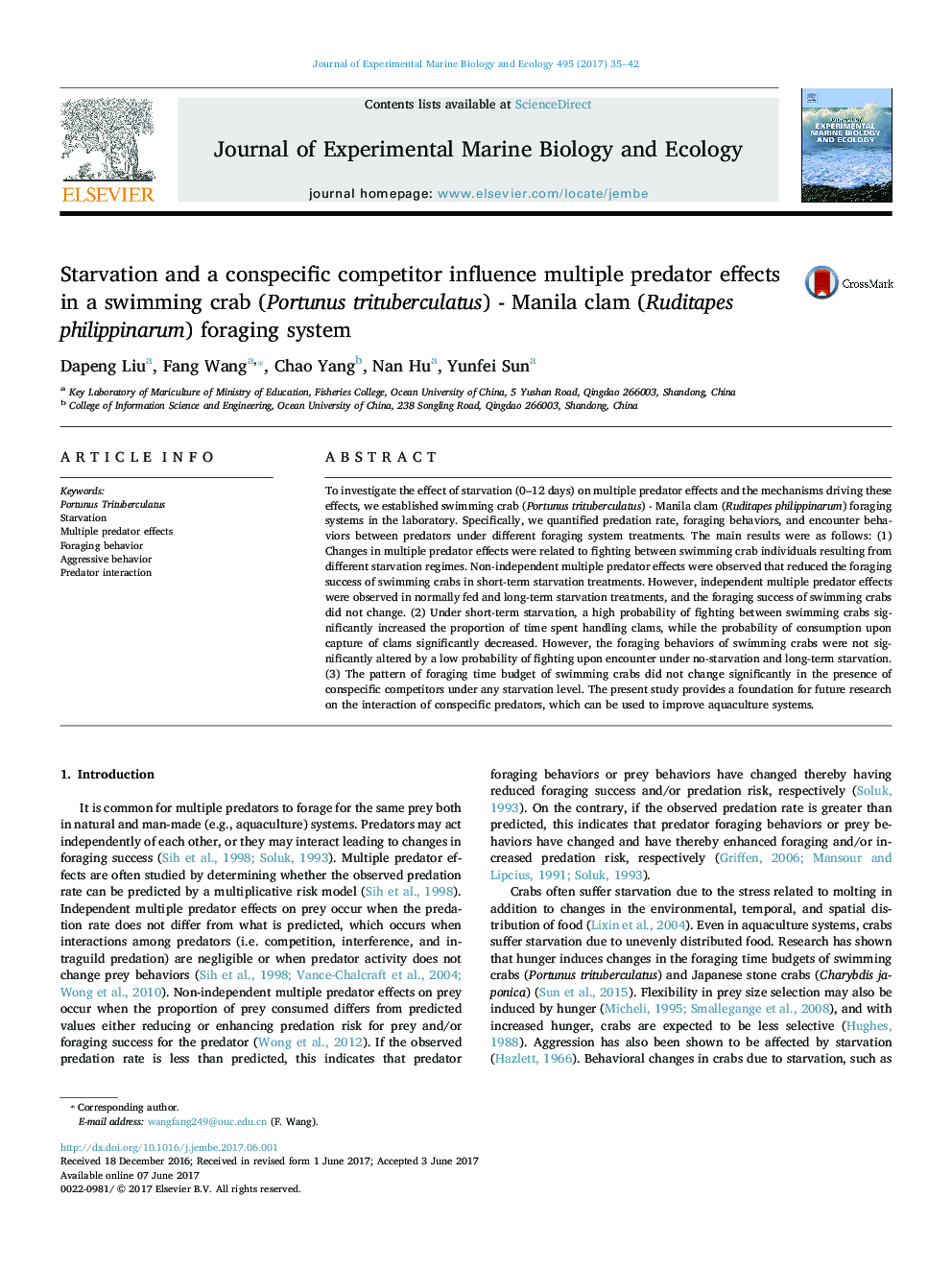| Article ID | Journal | Published Year | Pages | File Type |
|---|---|---|---|---|
| 5744467 | Journal of Experimental Marine Biology and Ecology | 2017 | 8 Pages |
Highlightâ¢Multiple predator effects change with increased starvation.â¢The probability of aggressive interaction increases due to starvation.â¢Aggressive interaction between predators changes their foraging behaviors.â¢The handling time and probability of consumption upon capture are influenced by starvation and aggressive interaction.
To investigate the effect of starvation (0-12Â days) on multiple predator effects and the mechanisms driving these effects, we established swimming crab (Portunus trituberculatus) - Manila clam (Ruditapes philippinarum) foraging systems in the laboratory. Specifically, we quantified predation rate, foraging behaviors, and encounter behaviors between predators under different foraging system treatments. The main results were as follows: (1) Changes in multiple predator effects were related to fighting between swimming crab individuals resulting from different starvation regimes. Non-independent multiple predator effects were observed that reduced the foraging success of swimming crabs in short-term starvation treatments. However, independent multiple predator effects were observed in normally fed and long-term starvation treatments, and the foraging success of swimming crabs did not change. (2) Under short-term starvation, a high probability of fighting between swimming crabs significantly increased the proportion of time spent handling clams, while the probability of consumption upon capture of clams significantly decreased. However, the foraging behaviors of swimming crabs were not significantly altered by a low probability of fighting upon encounter under no-starvation and long-term starvation. (3) The pattern of foraging time budget of swimming crabs did not change significantly in the presence of conspecific competitors under any starvation level. The present study provides a foundation for future research on the interaction of conspecific predators, which can be used to improve aquaculture systems.
